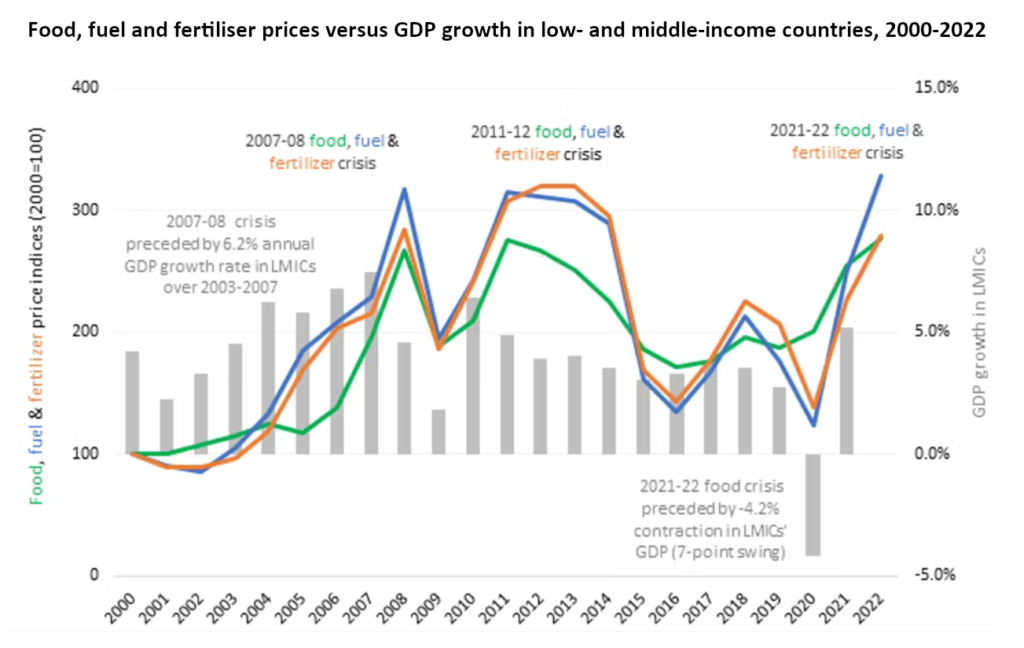The 2022 is going to be a very difficult year for the global food system, due to disruption of supplies and effects of sanctions caused by Russia’s invasion of Ukraine. This chart from UNU-WIDER suggests that a food crisis was brewing even before the Ukraine war.

A combination of factors could make it much worse than hikes of 2008 and 2011-2012
1️⃣ This time it is compounded and still unfolding—we witness growing prices for cereals AND fuels AND fertilizers. Worst yet to come. Between 2019 and March 2022, cereal prices already has increased by 48%, fuel prices by 86% and fertiliser prices by 35%. Food, fuel and fertiliser prices could stay high for years if the war in Ukraine protracts and the isolation of Russia’s economy tightens
2️⃣ The poor are still recovering from the COVID-19 crisis, which had the most severe economic impact on the urban poor. Food price inflation is higher than CPI in many countries of the world, hurting the most vulnerable
3️⃣ Governments have little room to manoeuvre, due to shrinking tax base and growing dets debts for the unprecedented protection for households and businesses during the pandemic.
▶ What could be done?
Most impactful measures are increasing food supply and increasing fuel supplies to help bring down fuel and fertiliser (inter alia through resolving logistical bottlenecks and reducing shipping costs). However, it is not clear if countries are willing and ready to implement these measures.
Social protection could provide necessary support, via food or financial aid. These measures require concerted efforts of international institutions, governments, local actors, NGOs and the private sector. International community must help governments, facing tough post-pandemic fiscal circumstances, to mobilize resources for social protection. Combining universal programs with targeted programs could help to make the most of constrained fiscal space. World Bank real-time review of social protection and jobs responses to COVID-19 documented 3,856 social protection and labor measures planned or implemented by 223 economies Advanced big-data-driven technologies, like artificial intelligence and machine learning, could help in better targeting. However, they should be complemented with thick data and human solidarity to ensure proper combination of empowerment and protection.
